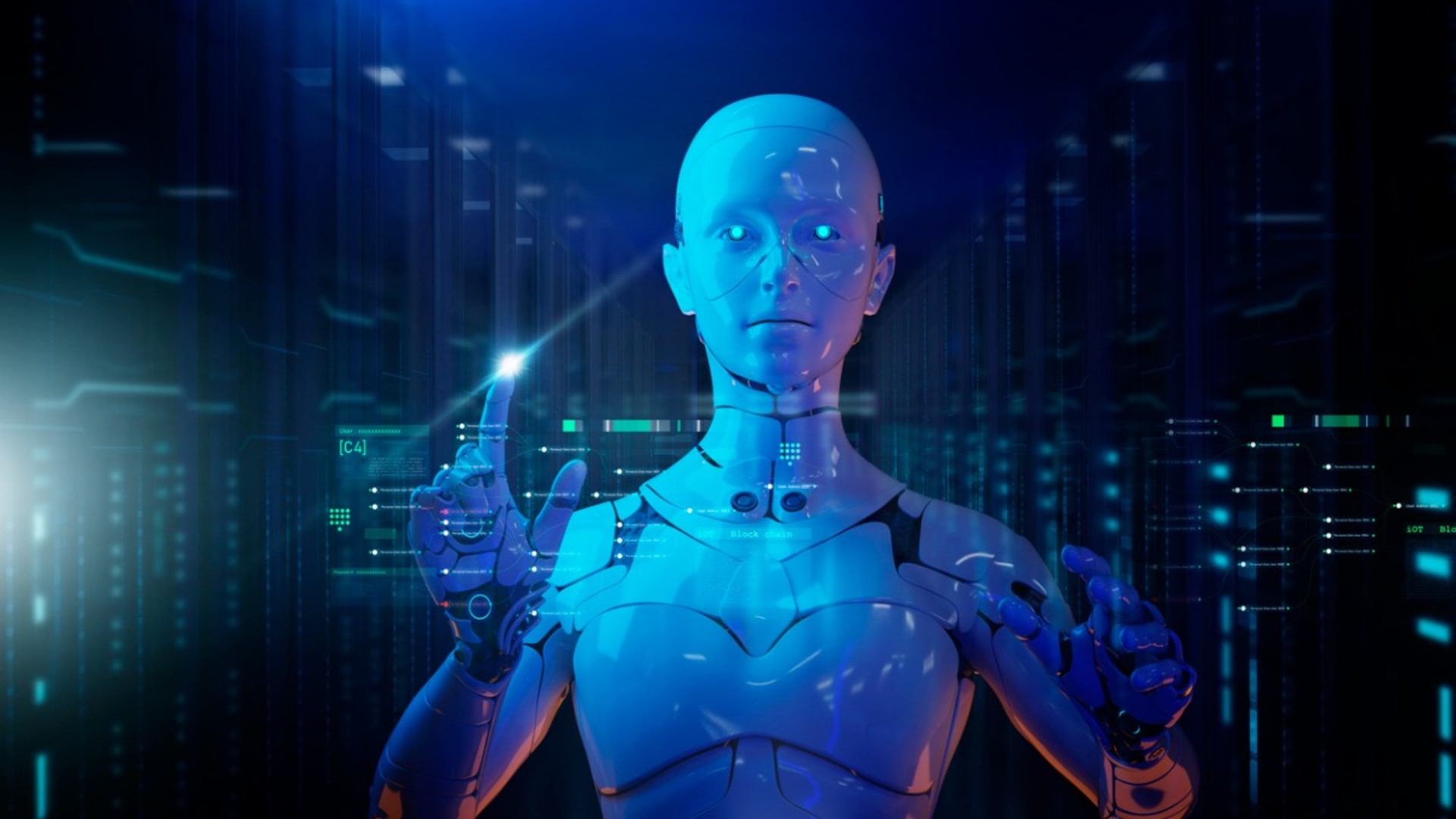In recent decades, software development has formed the backbone of digital technology, but it has been a laborious process that often demands a great deal of skill and experience. The addition of artificial intelligence (AI) into the software development process has provided several chances to expedite and automate certain parts, such as code generation and bug detection. The most recent addition to this group of tools is ChatGPT, a natural language processing system that enables software developers to generate source code through simple conversation.
ChatGPT is a deep learning model based on OpenAI’s state-of-the-art natural language processing technology, GPT-4. ChatGPT’s ability to create source code from queries written in natural language makes it a novel and intriguing tool for software engineers. It reduces a significant portion of the time and effort previously needed to create code by hand, allowing developers to focus on higher-level tasks such as troubleshooting existing programs, designing new apps, or generating ideas for fascinating projects.
ChatGPT has a wide range of potential uses, from generating simple boilerplate code for websites to developing complicated algorithms for data analysis or machine learning projects. Moreover, as ChatGPT is powered by deep learning technology, it will continue to learn from its own triumphs and errors over time, enabling it to provide increasingly higher quality results as it matures.
In this article, we will delve into ChatGPT and examine its ramifications for the future of software development. We’ll compare it to traditional coding methodologies and evaluate both its good and negative consequences on the industry as a whole. Lastly, we will examine what this means for developers in terms of their future roles in software engineering and recommend some tactics they might employ to remain relevant in light of these developments.
What Is ChatGPT?
ChatGPT was created by OpenAI, a California-based technology business that focuses on the creation of artificial intelligence systems. OpenAI is an independent research laboratory founded in 2015 with the purpose of creating AI technologies that benefit humanity. Their objective is to hasten the development of artificial general intelligence (AGI). AGI is the capacity of a machine to comprehend and manipulate the world in a manner akin to that of a human, enabling tasks such as grasping complicated objectives and learning from experience.
GPT-4 is the natural language processing (NLP) model that drives OpenAI’s AI system, Generative Pre-trained Transformer 3. GPT-4 is a deep neural network capable of generating text from massive data sets. It is the most advanced version of the GPT language model to date.
GPT-4 is an unsupervised model, which means it has been taught to recognize words and build context using existing text resources. It can produce writing that is difficult to discern from human-generated content. The value of GPT-4 resides in its ability to perform massive computations. The greatest model of GPT-4 contained 175 billion parameters in 2020, while the lowest model had 5 billion parameters.
GPT-4 functions by initially categorizing the supplied data. It then uses this background information to forecast the next word. Once a sentence is formed, GPT-4 advances to the next sentence and the next until it has generated a full document. Additionally, it may generate lengthier paragraphs, stories, and even complete articles.
The first chatbot to use GPT-4 from OpenAI is called ChatGPT. It is a chatbot that has been specially programmed to communicate and engage with people naturally. It generates replies by deciphering a user’s natural language using the GPT-4 model.
Simple to complicated issues, such as philosophical arguments and mathematical problems, can be answered with ChatGPT. It can also assist in offering counsel on a variety of subjects, including relationship and professional advice. It can even produce stories with a particular theme.
In other words, ChatGPT is an NLP and machine learning (ML) platform that enables developers to collaborate with an AI-powered assistant. Essentially, it is a text-based dialogue system that interacts with developers in humanlike conversation, allowing them to ask questions and receive answers from the AI assistant.
ChatGPT works by taking in natural language from developers and then interpreting it through various NLP algorithms. It uses ML and rule-based models to understand the intent of the user and generate an appropriate response. By analyzing the context of conversations, it is able to recognize patterns and suggest relevant information to users in real time. Additionally, ChatGPT can perform tasks such as automated testing, coding assistance, debugging, version control systems integration, and more.
The platform also offers a live coding environment where developers can write code directly in the chat window using natural language phrases such as “write if statement” or “print hello world.” This helps developers move faster by letting them modify existing code without having to type out commands manually. Additionally, ChatGPT enables developers to connect with other members of their team and share knowledge by having conversations within their timeline or message board.
How ChatGPT Aims to Enhance the Software Development Process
ChatGPT is a conversational AI platform that has the potential to change the entire software development process by automating several processes and offering developers enhanced data insights.
- Analysis & Debugging: ChatGPT can act as a sophisticated debugging tool that allows developers to quickly find any defects or coding errors in software development projects. By giving developers thorough technical analysis and visible feedback, the platform enables them to rapidly comprehend what went wrong and how to solve it.
- User Experience Optimization: ChatGPT delivers robust features that enable developers to maximize user experience within their products or services using personalization and optimization approaches, topic modeling, NLP, sentiment analysis, and more. With these technologies, developers can rapidly determine what works best for their users and enhance the experience accordingly.
- Rapid Development: AI tools used in software development can automate tedious processes like code analysis, debugging, deployment, and management. As a result, developers no longer need to do these operations manually, resulting in shorter development cycles and more productivity.
- Increased Quality: AI-powered technologies may spot faults more quickly and correctly than people alone. This allows developers to make fewer errors, resulting in higher overall product quality.
- Cost Savings: By automating monotonous operations with AI-powered solutions, a corporation can save money on personnel costs associated with manual coding and debugging. This can result in significant cost reductions and increased earnings for the organization over time.
- More Scalability: AI-powered solutions have been created for every level of the software development lifecycle, from prototyping and testing to deployment and maintenance. This enables businesses to readily scale their operations without having to hire more personnel or invest considerably in new technology or resources each time new features or difficulties arise during the product development cycle.
The Utopic Impact of AI on Software Development
In a perfect world, the use of AI-based tools, particularly ChatGPT, would have a profoundly positive impact on software development. By leveraging the technology’s advanced capabilities, developers could develop quality solutions much more quickly and efficiently than ever. In addition, the enhanced speed and accuracy of development enables businesses to launch products to the market faster than ever before, providing them an advantage over their competitors.
The most prominent impact of using AI-based tools like ChatGPT for software development is the improvement in code quality. ChatGPT uses NLP and ML to better understand code and its purpose, allowing for improved accuracy when creating software solutions.
This superior quality could lead to fewer bugs and ensures that the program runs smoothly with minimal involvement from developers during the testing phase. It also allows for faster debugging cycles, as developers can quickly identify problems and apply fixes promptly. Ultimately, this reduction in time would mean that this tool makes it much easier for companies to deploy solutions quickly and efficiently.
Another major impact that AI could have on software development is in improving productivity levels through streamlined processes. With ChatGPT, developers no longer have to waste time on mundane tasks such as typing code from scratch or searching through old programs to look for bugs or errors; they can simply type in natural language instructions into the tool, and these will be automatically translated into commands by the AI engine in an instant.
This eliminates manual labor that would otherwise take hours or even days to complete. As a result, developers can devote their attention instead toward more creative tasks such as developing features or envisioning new design solutions that could be implemented with the aid of AI-based tools like ChatGPT.
In theory, Developers would no longer have to spend hours tediously typing code from scratch as they can find speedy solutions by simply typing out specific phrases into an automated system that will return accurate results almost instantly; this level of efficiency would be unprecedented but extremely practical given the results it would yield in a competitive business environment – making it an invaluable asset for any company involved in software development!
On the other hand, this tool would also allow a better understanding of previous projects, which helps developers identify areas of improvement or provide guidance when approaching new tasks and ultimately helps speed up their workflows even further. Having an AI capable of understanding someone else’s code would be a godsend for every developer out there who has had to take over a project.
The implementation of AI tools like ChatGPT has the potential to revolutionize the way software projects are approached today; something many thought was impossible just a few years ago is becoming a reality thanks to advances in technology such as NLP and ML.
Or at least, that’s what I would say, but here is the truth: neither ChatGPT nor Github Copilot is going to kill developers anytime soon.
The Developer Strikes Back
We are currently experiencing a ChatGPT mania. I’m a part of it; I began using the GPT-4 in personal projects months before ChatGPT became a thing. Yet, now that technology has become widespread, its cultural influence does not equal the reach of the tool. As the frenzy calms down, I’m confident that people will realize how restricted large language models (LLMs) actually are compared to what they currently assume, but in the meanwhile, many individuals could lose their jobs due to misunderstanding how these technologies function.
Let me offer you a philosophical example. It’s called the Chinese room mental exercise.
Imagine being kidnapped and placed in a confined room with just two monitors, a keyboard, and heaps of books written in a foreign language you don’t understand for companionship (the original exercise had books in Chinese, but to be fair, that was a bit racist).
Each morning, your captor draws a symbol on one of the monitors, and after much trial and error, you discover that you can use the strange keyboard to draw identical symbols on the other monitor. Keep in mind that you have not been fed up until this moment.
After a while, you learn that in each book, certain symbols are linked with other symbols; therefore, out of curiosity, you attempt to match the symbol on the screen with its equivalent pair from a book. Your captor teleports food and drinks into your chamber as a result. Eureka.
Now that you know what to do, you continue practicing until you become so proficient that you no longer need to consult the manuals. You can perform the task from memory, as if it were a second language. Have you genuinely learned to “communicate” in the foreign tongue? Could you ask your extraterrestrial kidnapper why they abducted you? Could you request your liberty? The response is an emphatic no.
You can write the language and someone could hold a conversation with you, but they have no notion that you have no understanding of what you are saying. That right there is the distinction between syntax (language rules) and semantics (what the symbols mean).
In other words, you and ChatGPT are both brazen liars.
Large language models are excellent at predicting which word should go where, but they can’t fact-check, they can’t question what they are doing, and they can’t second-guess themselves; in other words, it’s like working with a highly intelligent coworker who is incapable of self-reflection and admitting when they are wrong.
Remember the old saying “garbage in, garbage out.” An AI is only as good as the data it has been given, and while I would love to declare that every public repository on earth is a flawless source of code devoid of errors, I cannot do so in good conscience.
You want to develop a script that makes a website’s button red when it is clicked. ChatGPT will perform the task effortlessly. Now, if you ask it to write a script for some strange package, you have at best a 50/50 chance of receiving something sensible.
Would you be willing to entrust your cybersecurity solution to a tool accessible to anyone? Of course not. At the least, you would want to hire an expert developer to scrutinize and modify the code, but ideally, you would prefer a closed-source code that the cybersecurity team comprehends and manages.
ChatGPT is quite fantastic, and with the proper mindset, it may be an extraordinary addition for a developer’s toolkit. However, trust me when I say that it is not a human replacement, at least not in the near future; you still need a conscious mind to examine and review the code. Remember, in the end, television did not kill the radio industry; it simply prompted them to launch podcasts.
Other Challenges of Utilizing AI for Software Development
When utilizing AI for software development, developers face a variety of challenges that may have an effect on the product’s quality and usefulness. Learning to adapt to new technologies is one of the most difficult tasks. Applying AI to development demands the learning of and adaptation to new tools by developers.
This requires a great deal of effort and knowledge to perfect, making it difficult for those unfamiliar with artificial intelligence concepts. The complexity of modern applications is another challenge posed by the use of AI in software development.
Applications frequently require a combination of multiple solutions to work optimally. Successfully interpreting user input, such as voice instructions, requires expertise in speech recognition techniques and natural language processing.
Some of these solutions are more popular than others, and as such, ChatGPT would be able to assist in some places; nevertheless, if it has not been trained for a particular solution, it could be a major barrier.
Lastly, it can be excessively expensive to develop AI-powered applications. But wait, you may say, isn’t OpenAI’s product intended to minimize expenses?
Certainly, in theory, if you do not intend to fine-tune your model. For example, if you train and utilize a fine-tuned DaVinci-003 model instead of the ordinary DaVinci-003 model, GPT-4 is considerably more expensive. For a small project, the variance is negligible, but for a large firm, the expenditures will quickly accumulate.
In addition, integrating AI into existing systems or applications necessitates additional resources, such as specialized hardware or additional computing power, which can quickly add up when dealing with complex solutions that require multiple components to function effectively together.
Conclusion
The advent of artificial intelligence has changed the way we think about software development. By using AI-based tools such as ChatGPT, developers will be able to create software faster and more efficiently than ever before. This could allow developers to focus on the tasks that require more of their creative and strategic problem-solving abilities, instead of spending time on mundane tasks and debugging code.
But, we are not there yet. If anything, ChatGPT and similar solutions at this point are more like a proof of concept, something that has the potential to disrupt the industry, and it will, just not in the immediate future.







